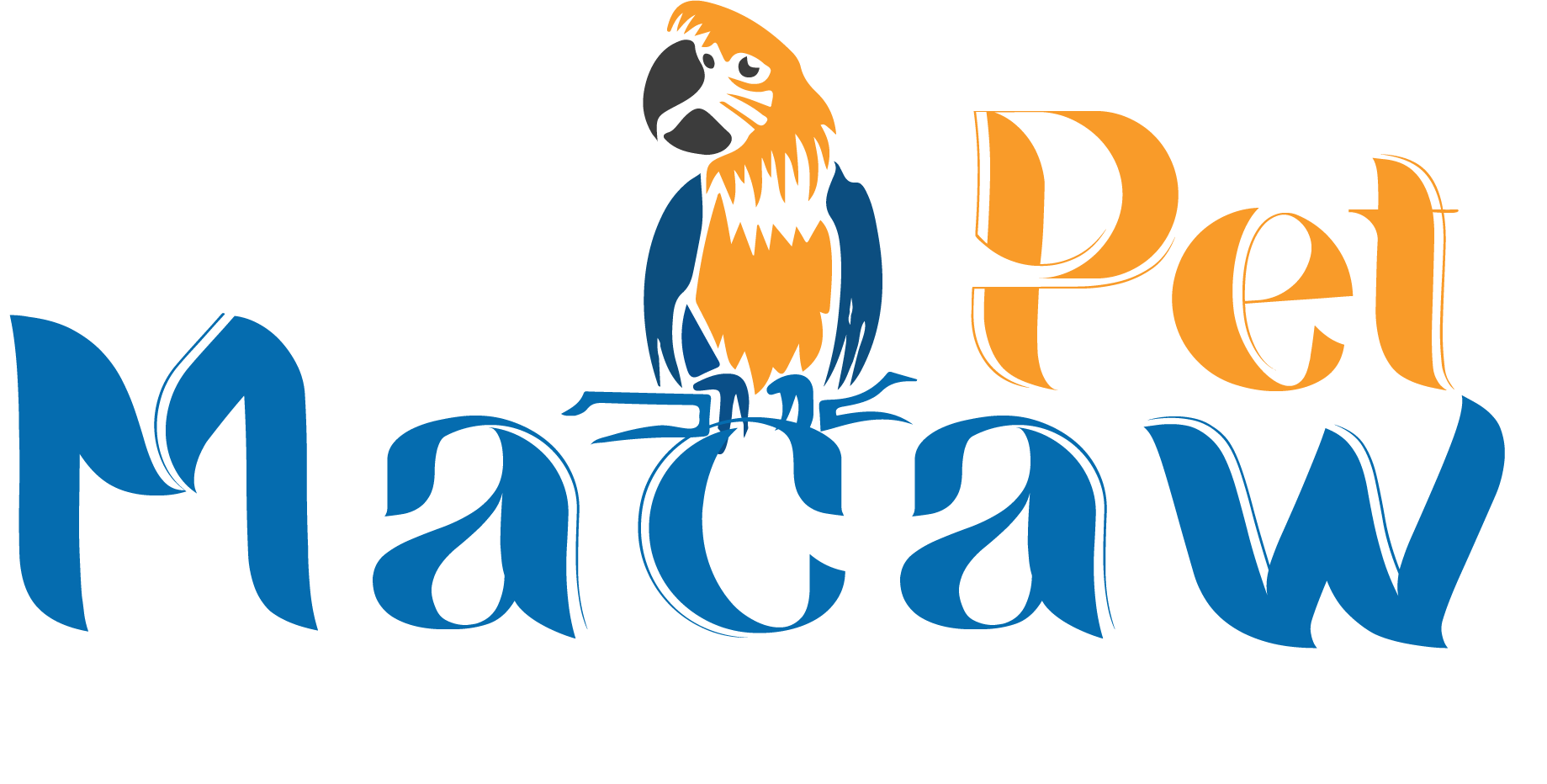Last Updated on September 3, 2022
You might have seen a few macaws, but do you know exactly how many macaw species exist? Let me tell you about all the species of macaws and what makes them special.
There are 17 different species of macaws. Almost all species have a unique appearance and personality. Some species are extinct in the wild, and some are critically endangered. I have shown & discussed most of these species in this article.
Let’s discuss each species in detail.
Blue And Gold Macaw
The Blue and gold macaw is also known as the blue and yellow macaw, native to the forests and woodlands of South America. It looks lovely with blue upper parts, goldish-yellow underparts, and a blend of green colors on the head.
There are some other species of macaws that are almost the same in size; blue and gold macaws can produce hybrids with these species. In fact many hybrids already exist.
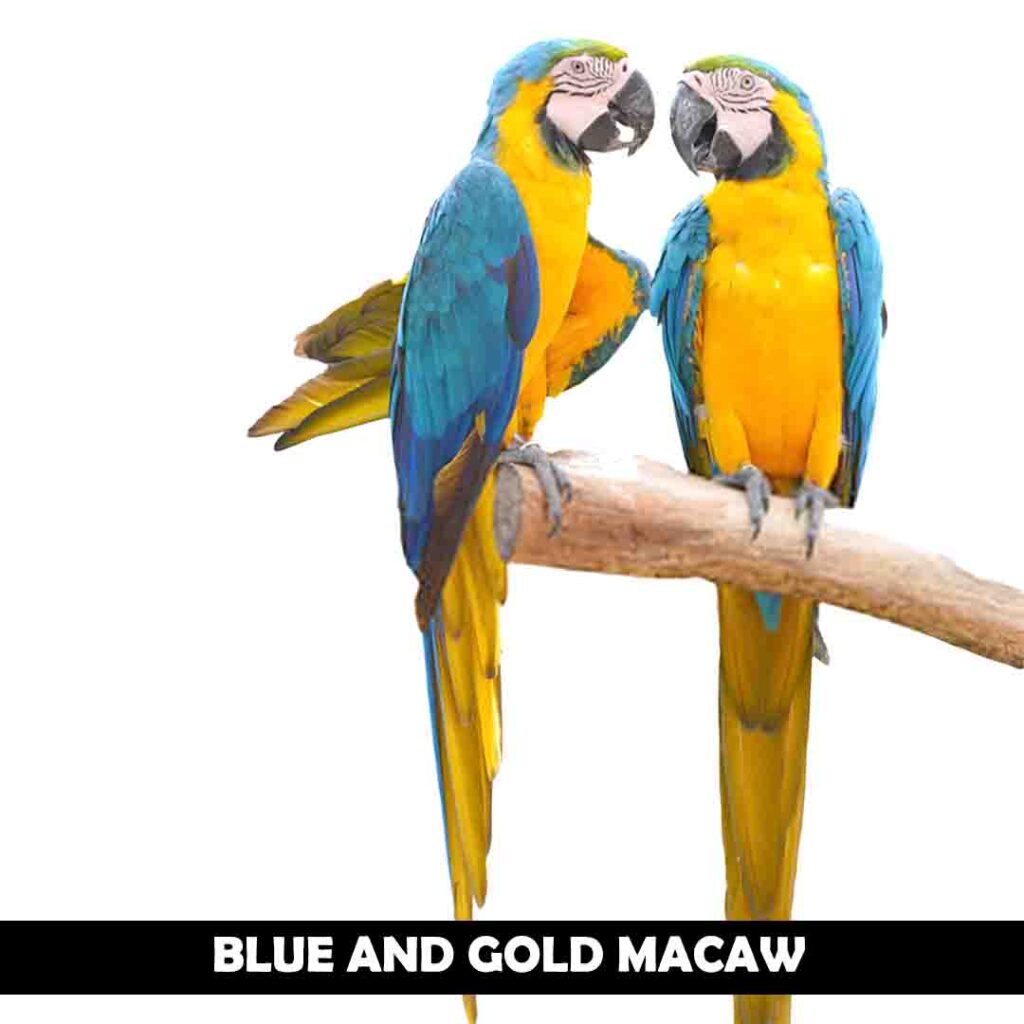
Green-winged Macaw
Green-winged macaw have red, green, and blue feathers. It belongs to the forests and woodlands of South America. Due to deforestation and illegal capturing of birds for the pet trade, their population has severely declined over the last few years.
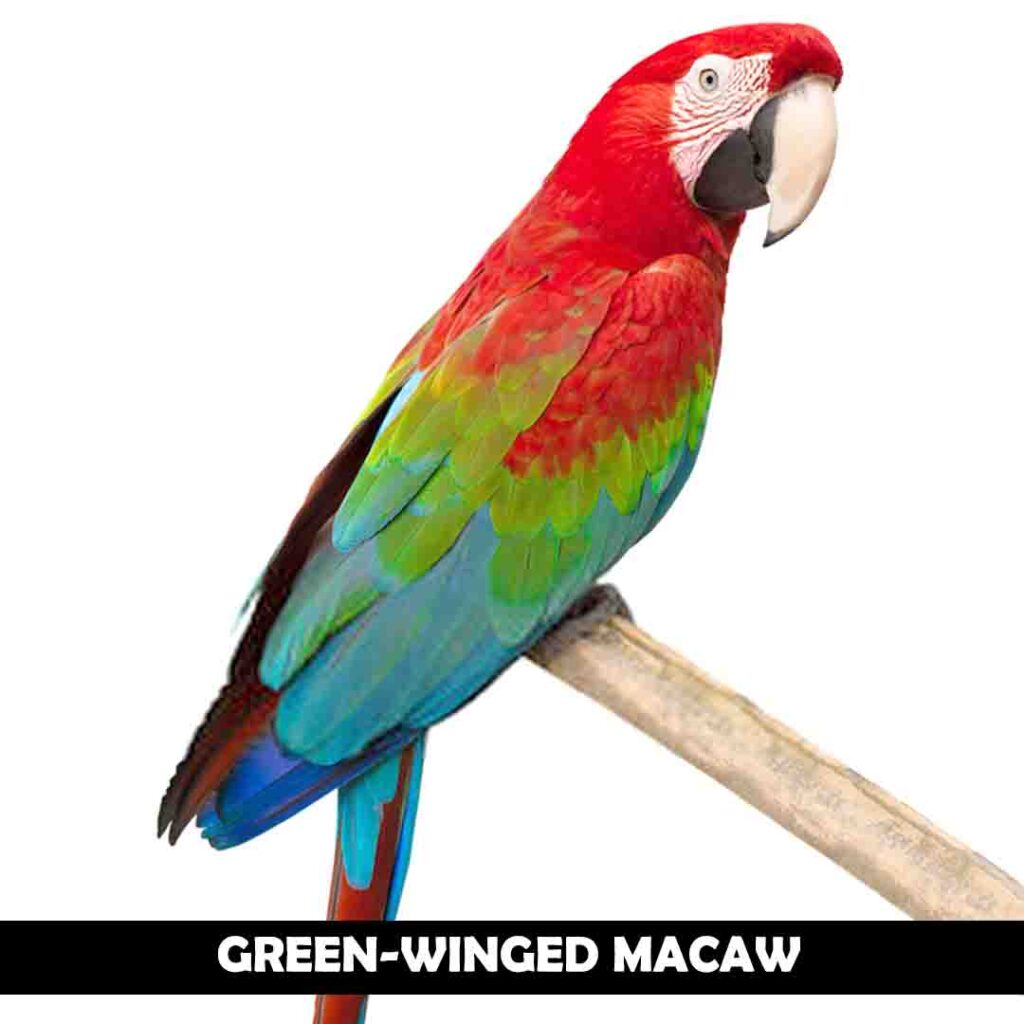
Military Macaw
The military macaw, also known as the great green macaw, is one of the largest macaw species. It is almost entirely green, except its head is bright red. Despite its sharp military look, it is social and charming; in fact, great green macaws become excellent pets.
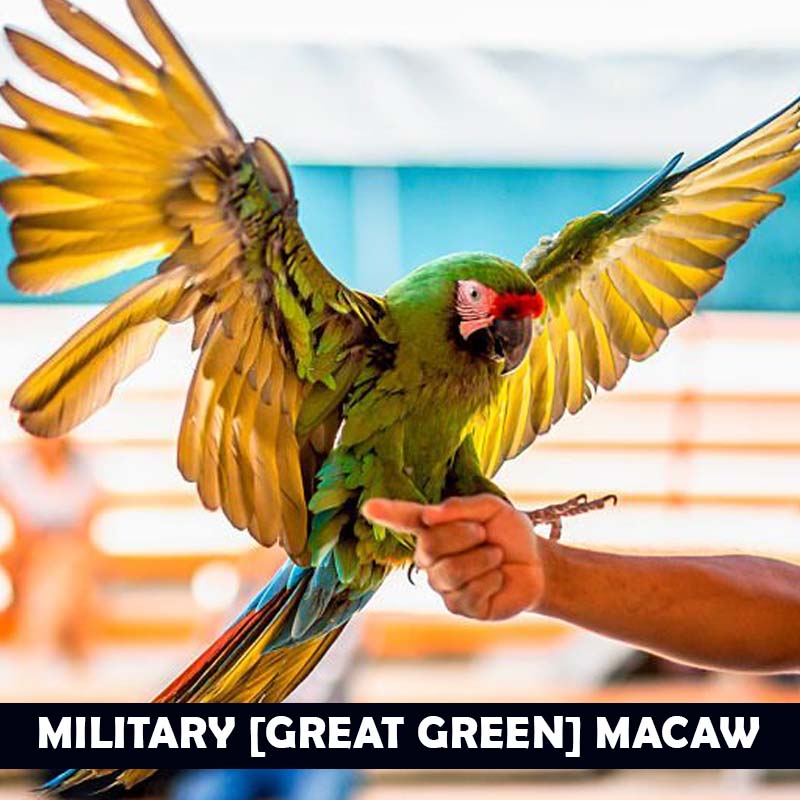
Red-fronted Macaw
Red-fronted macaw is native to semi-desert areas of Bolivia. It prefers living in warm climates where cactus and thorny plants are abundant. Red-fronted macaw is almost green with colored patches on the head, ears, shoulders & legs. Sadly, this beautiful species is critically endangered due to hunting for illegal trade and prevention of harm to crops.
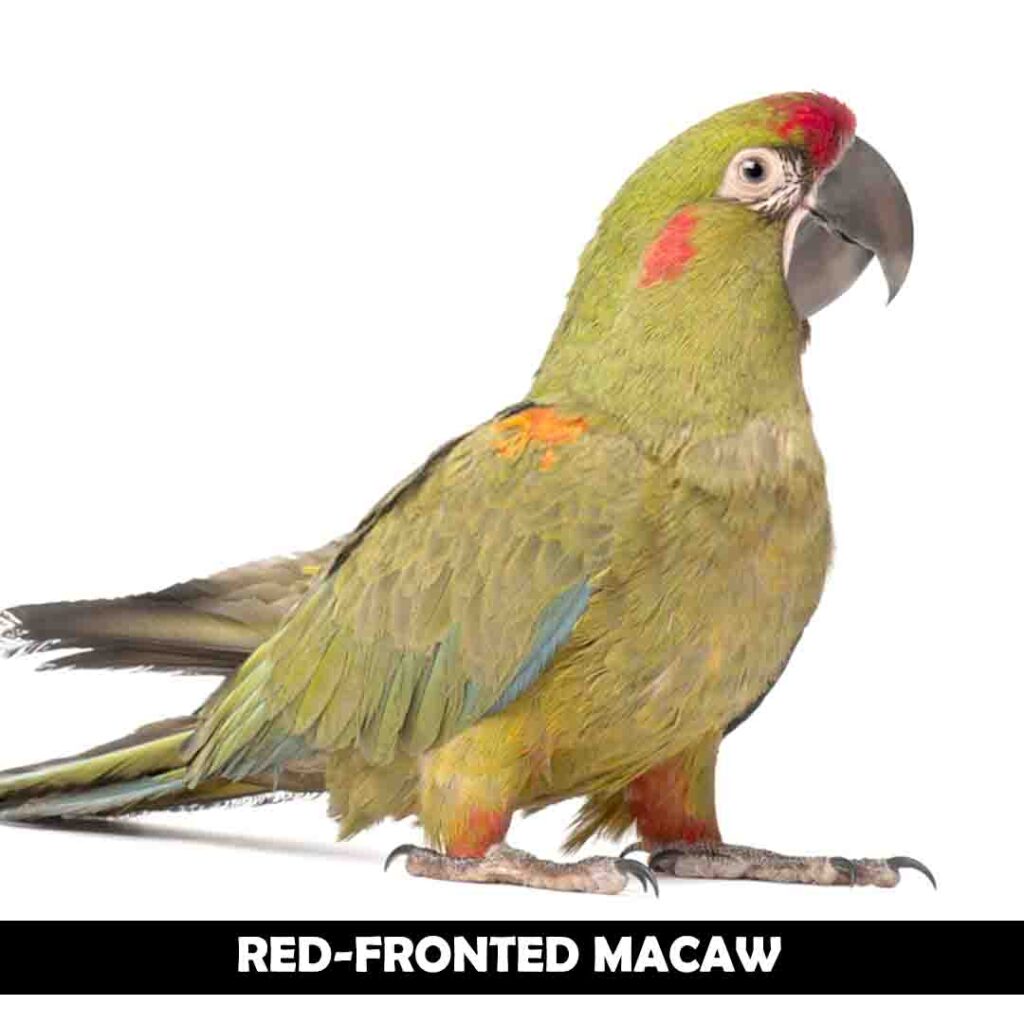
Hahn’s Macaw
It is the smallest of all macaw species and looks similar to the severe’s macaw. Hahn’s macaw has bright green feathers & its head is blue. It is native to the tropical lowlands of South America.
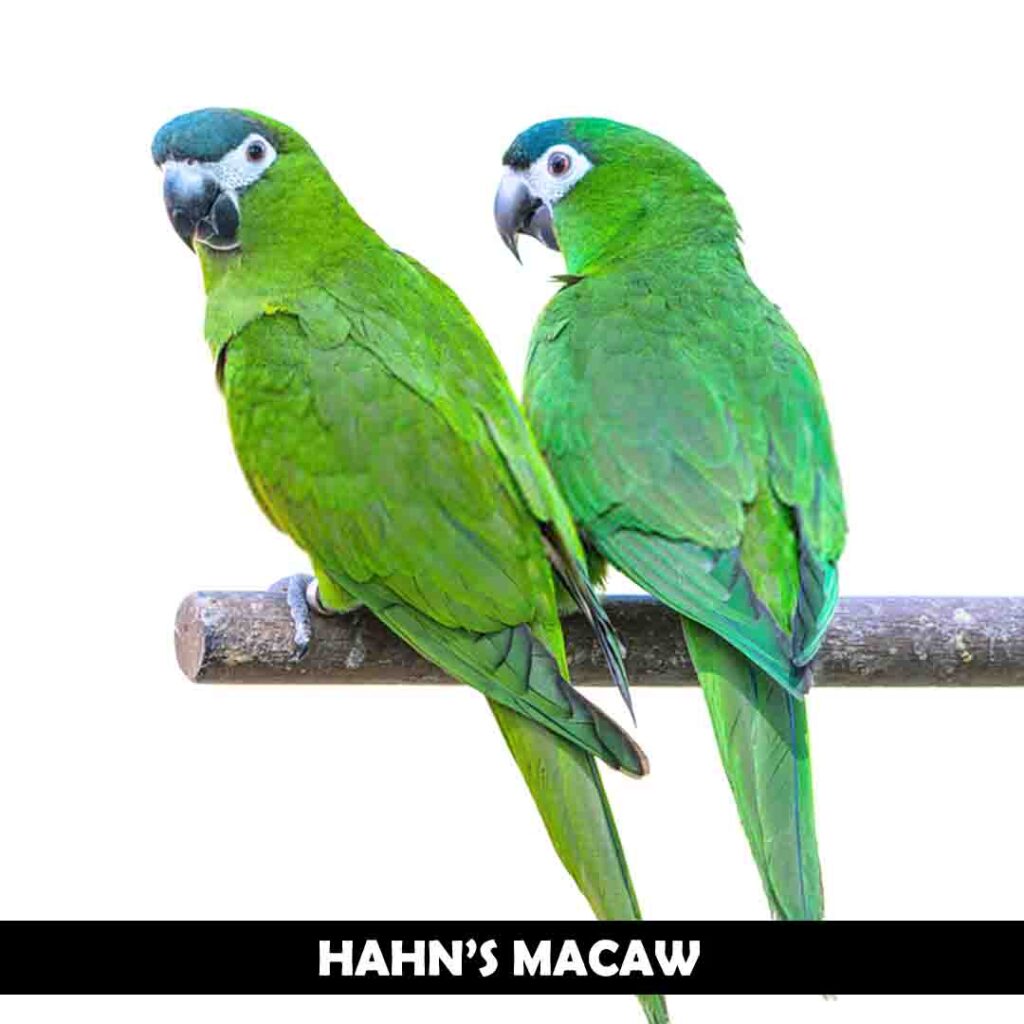
Hyacinth Macaw
It is the great of all macaw species, with a one-meter length. The blue hyacinth macaw belongs to the central and eastern parts of South America. Feathers are blue with a yellow circle around the eyes and lower side of the beak.
Blue hyacinth macaws are adorable birds; they are friendly & easy to bond with. Probably this is why they are often captured for sale as a pet. According to IUCN, only 4300 hyacinth macaws are left in the world, and their population is decreasing. [1]
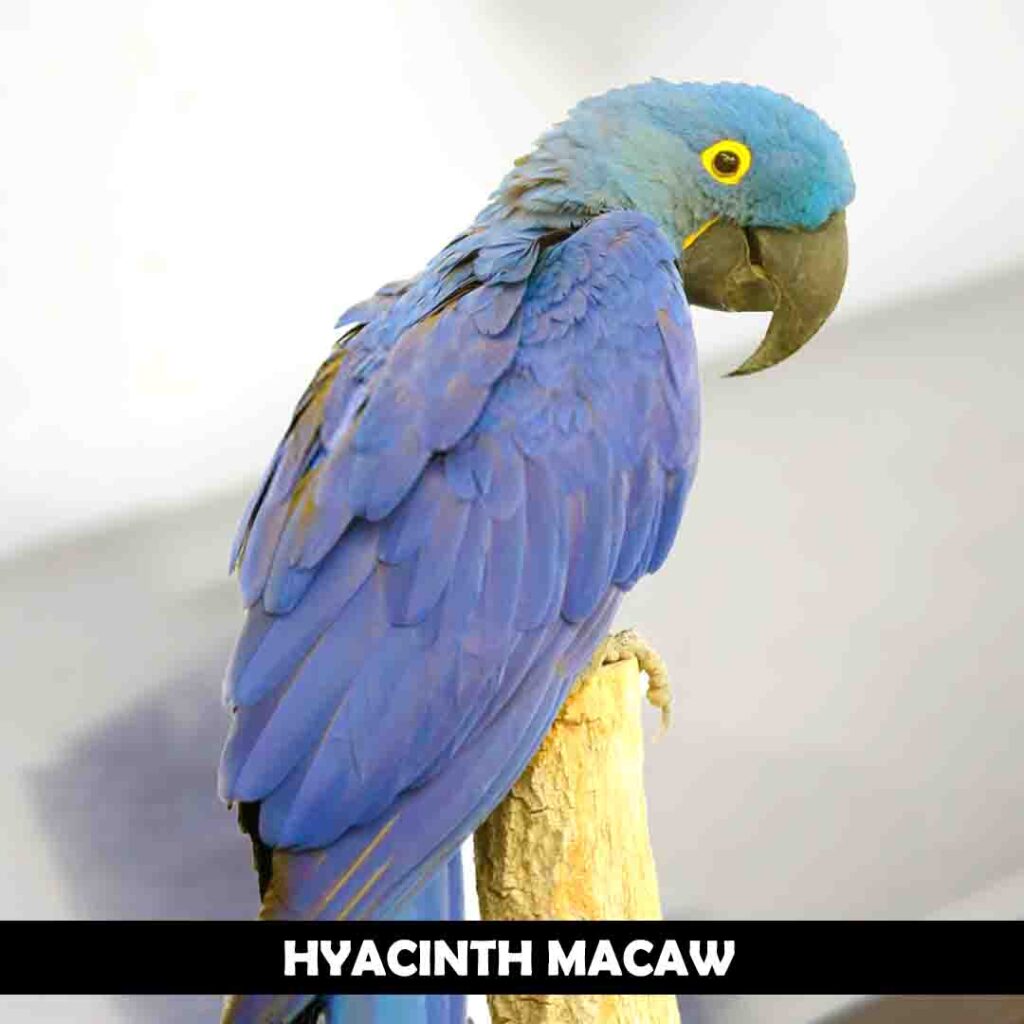
Glaucous macaw
Interestingly, the glaucous macaw looks just like hyacinth macaw & lear’s macaw. But all of these three species have slight color & size differences.
Glaucous macaw has blue-colored feathers and a grey head. It was native to Argentina, Paraguay, Bolivia, Uruguay, and Brazil. In the nineteenth century, it became rare due to illegal capturing and habitat loss. In 2018, this species was declared extinct.
Lear’s Macaw
It is native to Brazil. Its color is blue, with a yellow patch on the lower side of the beak. According to IUCN reports, the Lear’s macaw is endangered.
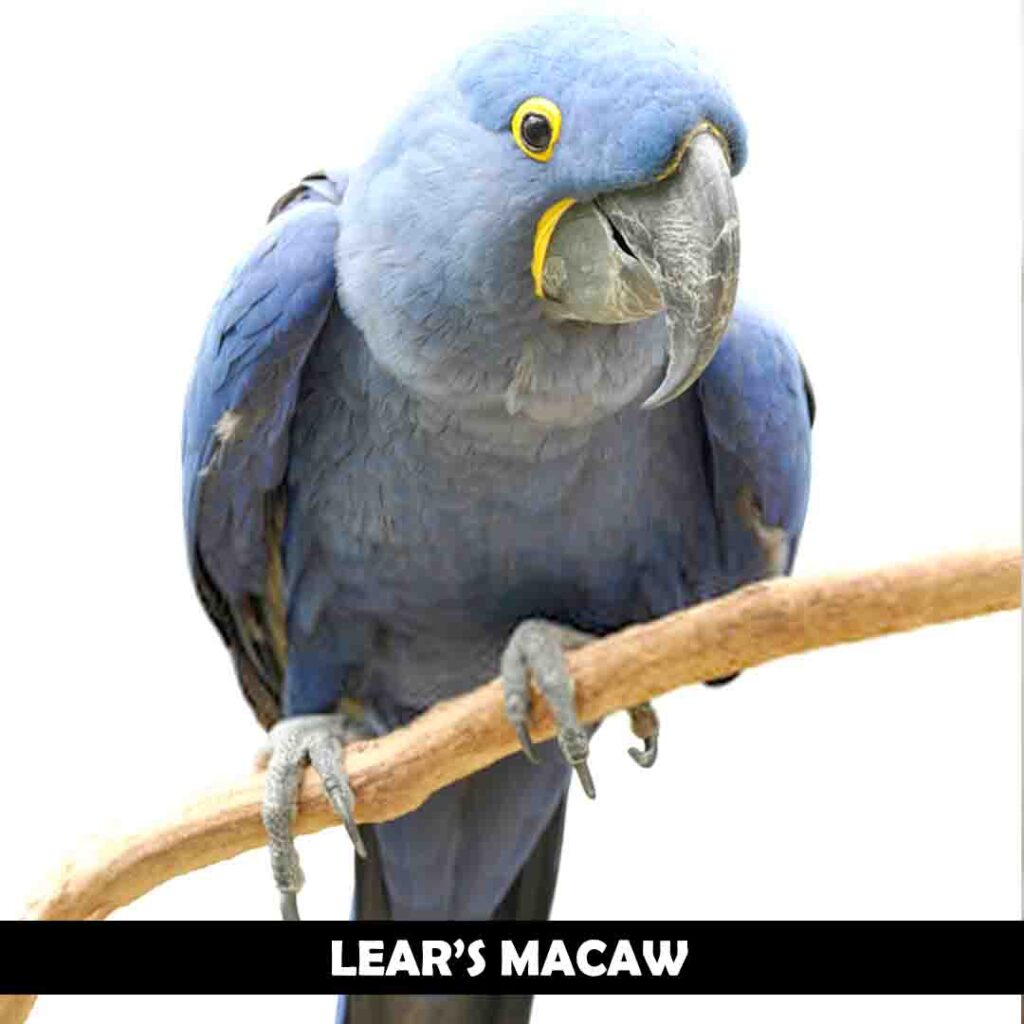
Spix’s Macaw
It is a small blue macaw that belongs to brazil; that is why it is also known as a Blue Brazilian parrot. Spix’s macaw has been extinct in the wild for the past 22 years. Only 250 spix macaws existed in captivity that were being raised by special programs to save this species.
Recently, in June 2022, eight spix macaws have been released in the wild. This will surely help elevate their wild population. So far, the birds are under observation, and they are doing great. The organization that have released these spix macaws plans to release twelve more spix macaws at the end of 2022. [2]
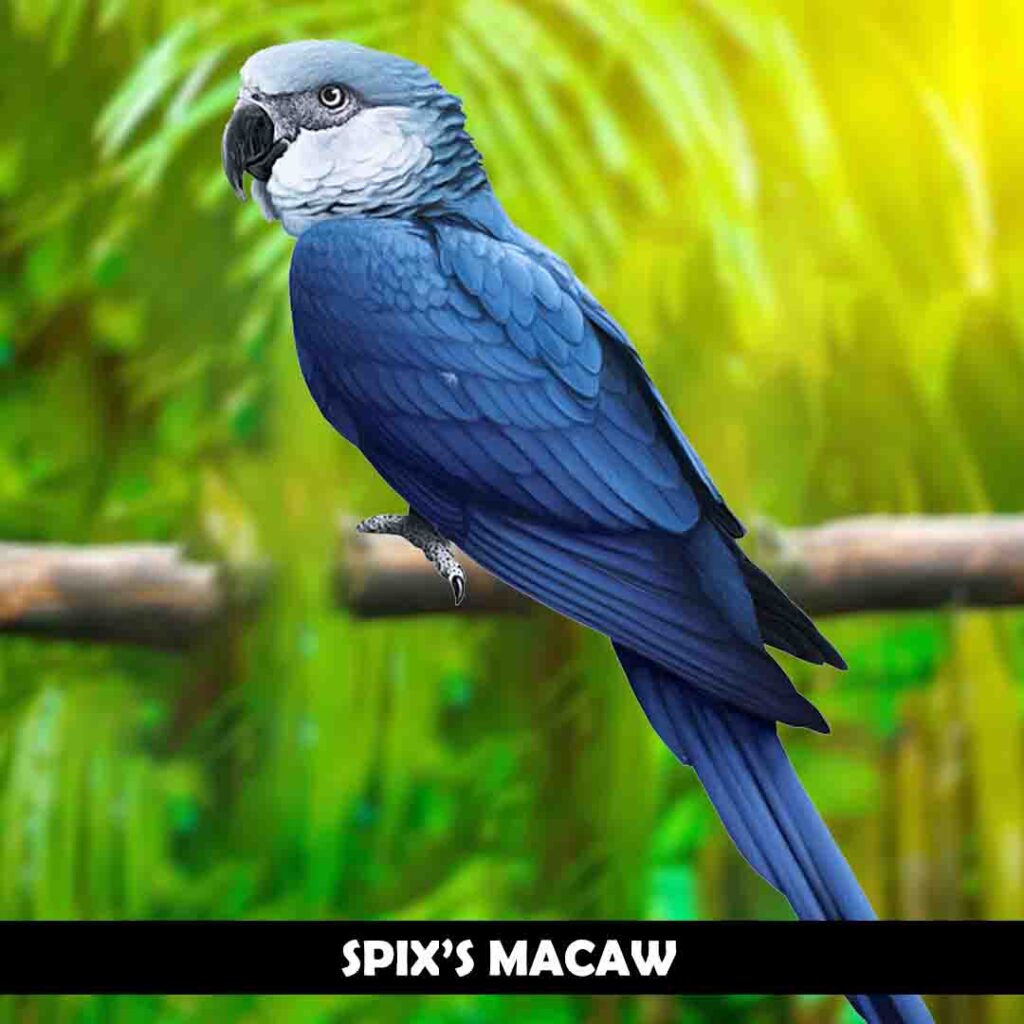
Illiger’s Macaw
Illiger’s macaw also known as blue-winged macaw is a small species of macaw native to the woodlands of South America. Its population is decreasing day by day, but it is still in good numbers.

Severe Macaw
Severe macaw, also known as chestnut fronted macaw, is a small-medium-sized species of macaw. It is entirely green except its shoulders & under tail feathers are red and blue. It belongs to North-South America and Bolivia.

Scarlet Macaw
It is native to the humid, evergreen forests of Central and South America. Scarlet macaw is one of the most colorful & largest macaw species. Apart from its colors, it has a structure similar to blue and gold macaws & military macaws. In fact, scarlet macaws can produce hybrid macaws with other large macaws.
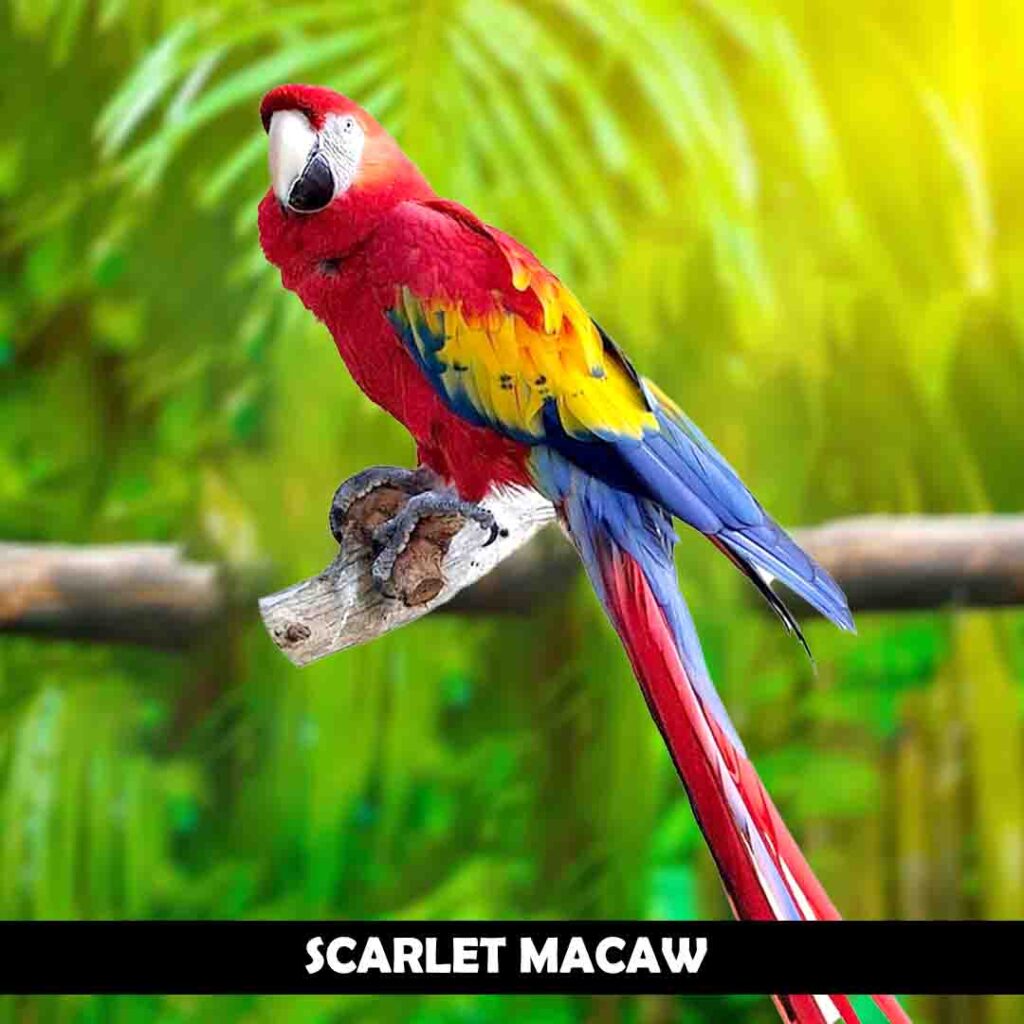
Yellow-collared Macaw
It belongs to the woodlands of South America and Brazil. It is also known as a golden collared macaw.
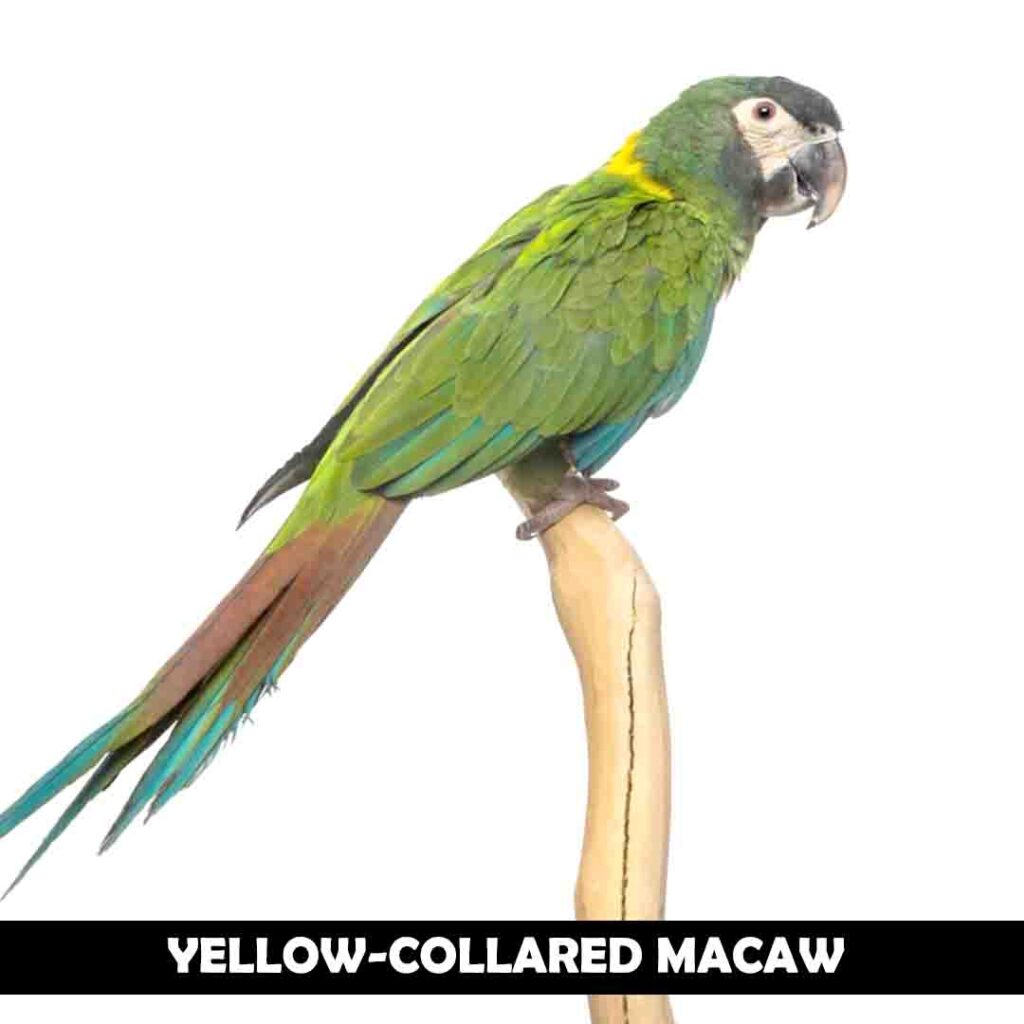
Red-Bellied Macaw
Among all the small species of macaws, the red-bellied macaw is the largest. It belongs to the tropical forests of South America. It lives on moriches palm tree and eats its fruit. Since palm trees are being cut down, the red-bellied macaws are endangered.
Because of their high mortality rate, they do not breed well in captivity. This is why they are not considered a suitable species to be kept & bred in captivity unless special care can be provided.
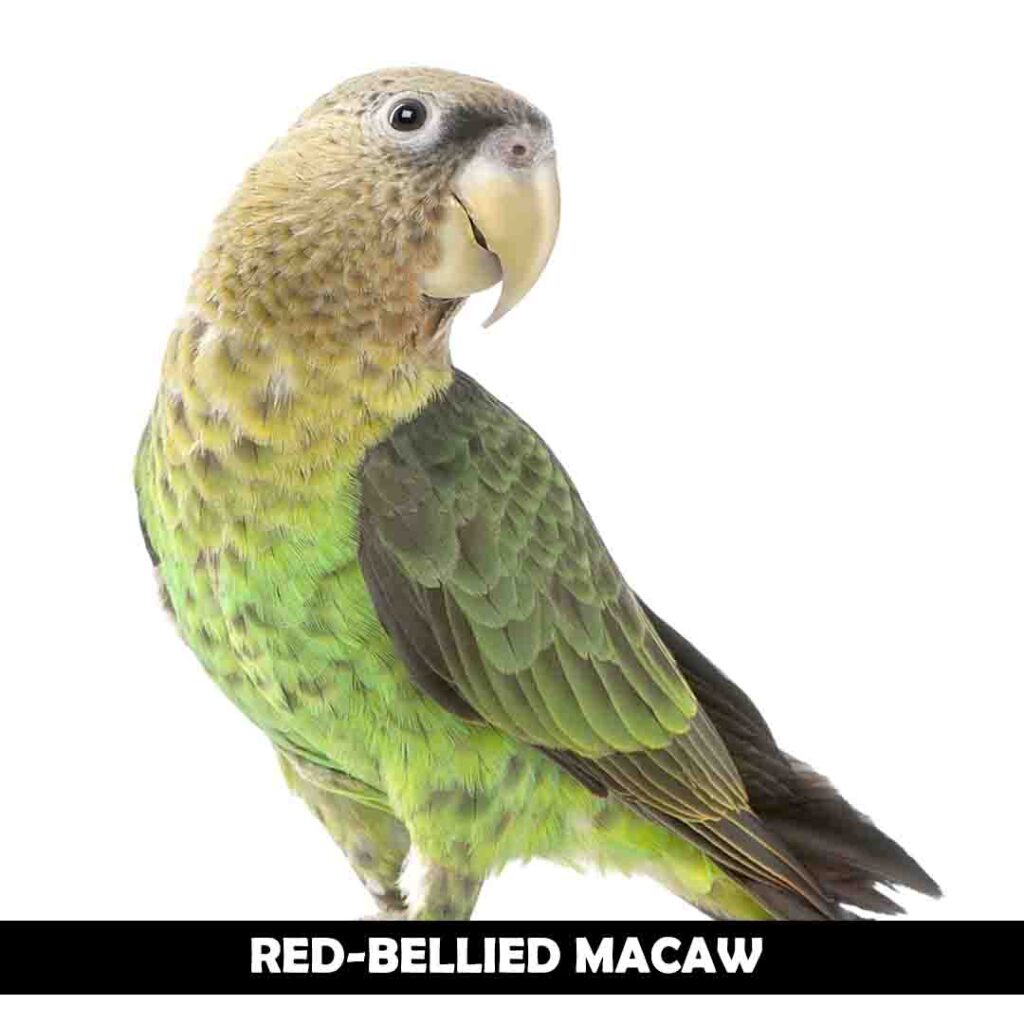
Blue-Headed macaw
Blue-headed macaw, also known as Coulon’s macaw, is a small macaw species. It looks very similar to Illiger’s macaw. Its entire body is green except its head, shoulders, and tail, which are blue. Some feathers of the tail are slightly maroon in color.
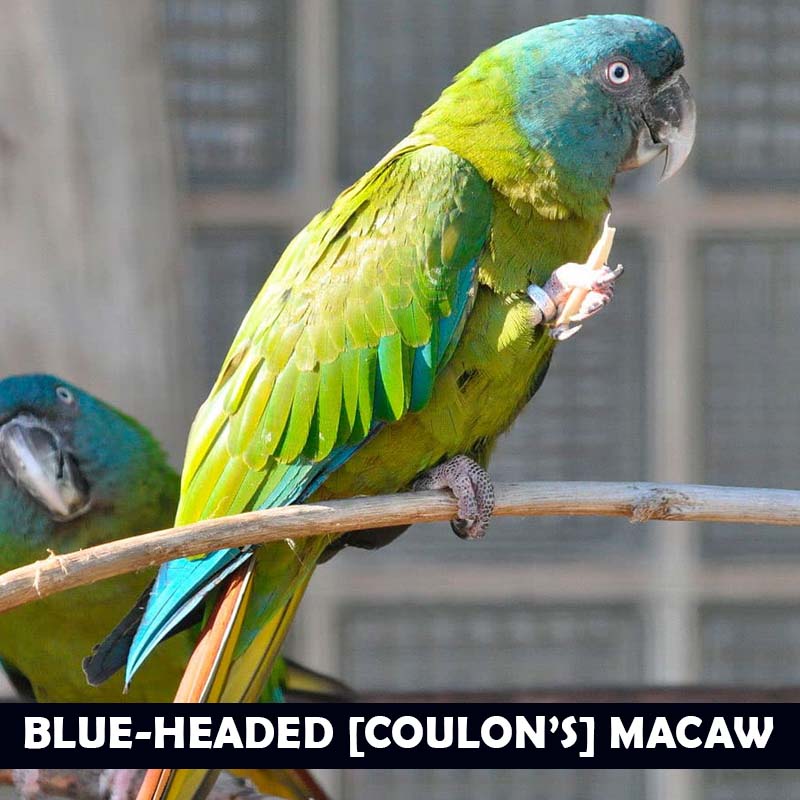
Hybrid Macaws
Besides the above species of macaws, some hybrid species of macaws also exist. Hybrid macaws are produced as a result of cross between two different species of macaws. The hybrid macaw contains the characteristics of both parent species.
Most of them are hybrids of blue and gold macaws with other species of macaws like scarlet macaws & military macaws. They are beautiful and unique in their own way.
Final Thoughts
Each macaw species is unique and attractive in its own way. So far, the known species are limited, but since macaws can produce hybrids, we might see hundreds of new macaw species over the next few decades.
Bilal is an aviculturist who loves to write in free time. His personal experience with bird care and breeding enables him to share valuable tips. So far, he has contributed more than 100 blogs to this site.
His goal is to promote bird-keeping and save endangered species.
